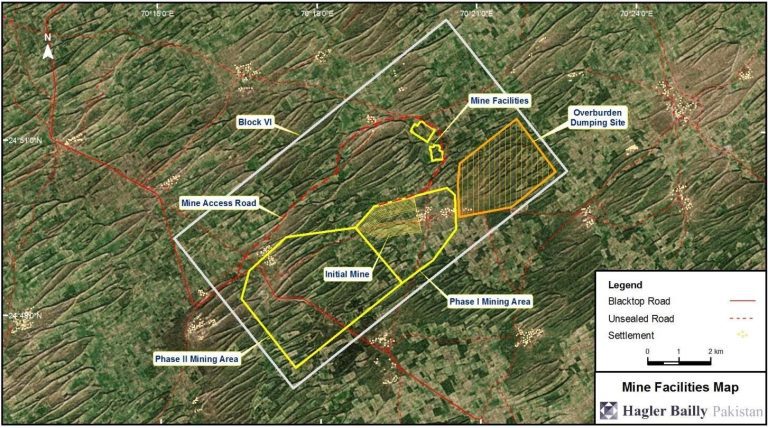Coal Resource
In February 2012, Oracle’s feasibility study for the Thar Coal project uncovered significant findings. It revealed 529 million wet tonnes of coal with a gross calorific value of 3,182 kcal/kg, making it ideal for power generation. With US$610 million in capital expenditure, it aimed to produce 5Mwt of lignite annually at a cost of US$42.21 per wet tonne. This study laid the foundation, indicating a 23-year mine life for Phase 1, following JORC Code standards.
Thar Block VI Mining Area

The coal has a calorific value of 3,182 kcal/kg (equivalent to 13.32 MJ/kg), with a volatile matter content of 33.7% for combustibility. Fixed carbon is 15.14%, ash is 5.89%, and moisture is high at 46.1%, impacting efficient utilization. These parameters define its profile and suitability for industrial applications.
Coal Power Plant
Oracle signed an MOU in May 2023 for the development of the 1320MW Thar coal-fired power plant in 2 units of 660MW each, with K-Electric: Pakistan’s largest private electricity distributor, as the off-taker and the provincial Government of Sindh as facilitator and possible investor. PowerChina International is also a a part of this consortium as a potential investor and contractor.
International Partners



The plant to be potentially located at mine site or at Port Qasim, and to be developed under CPEC as a priority project. The coal may be sourced from Block VI or from one of the two operating blocks. This potential off-take agreement of directly supplying power to K-Electric eliminates the need for a power purchase agreement with the Government of Pakistan via NTDC, and positions Oracle to become a supplier of indigenously sourced base load fuel for the load center in southern Pakistan.
